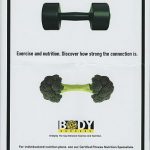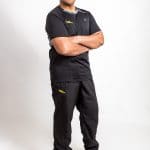Did you think search engine optimization of your health club’s website was primarily a matter of picking the right keywords? Turns out, keywords are just a piece of a much larger puzzle.
Is your wellness business winning the race?
89% of your prospective clients, members or patients start with a Google search.
You’re in a 24/7 race with your health, fitness and wellness competitors to convince Google that your site should show up higher on that search results page (SERP).
Winning requires search engine optimization (SEO): constantly tuning your website so it helps site visitors more than your competitors’ sites do, as measured by hundreds of Google ranking signals.
Top search ranking is about content—and behavior.
Fifteen years ago, SEO just meant stuffing websites with keywords.
Today, Google’s much smarter.
It constantly analyzes your site’s content and usability — plus your potential customer’s online actions and behavior before, during and after their visit to your site.
Quality content rules.
When you dial in your site’s content so that it fits site visitors like their favorite sweatpants, your business naturally moves up in the search rankings. The goal is to optimize your website around the messaging that does the best job of converting site visitors into paying customers.
How well does your site compare?
Google uses all this data to grade your site. For example:
- Is it fast enough? Is it mobile-friendly? Is it well-structured for Google indexing?
- Do your site’s visitors immediately search again after they visit your site — or did your site seem to answer all their questions?
- Was their next action a click-to-call to your business? Or did they return to that health club site they visited yesterday?
- Did they sign up for your newsletter, or chat your sales rep…or look at a couple of pages for 30 seconds and move on?
Answers like these determine where your site lands on the SERP.
Local SEO adds even more complexity.
Think of local search engine optimization — optimization to help people looking for a local health club or personal training studio, for example — as a layer that sits on top of traditional search optimization.
It embraces optimizing your digital presence on multiple platforms, including Google My Business (previously known as Google Local), Facebook Local, and in some cases, Yelp or NextDoor, an emerging local advertising channel.
The solution for business invisibility.
“We know we could grow faster — if only more people knew we were here.”
If you’ve ever said that, you’re in good company. We’ve heard that from health clubs, yoga studios, counseling practices, medical practices, chiropractors, women’s wellness centers and just about everyone else.
How often does your site show up on Page 1 for your most important keywords besides your brand? Now, you don’t have to be in the top spot on page 1 — but you do need to be on Page 1. Very few searchers ever venture beyond the first page of results.
If you’re dealing with this issue, the right place to start is almost always search engine optimization of your website.
And if you need to grow revenues while search engine optimization gradually improves your visibility, pay-per-click advertising can be an effective way to bridge the gap until your website pages start to rank higher and deliver more prospective clients, members or patients.




